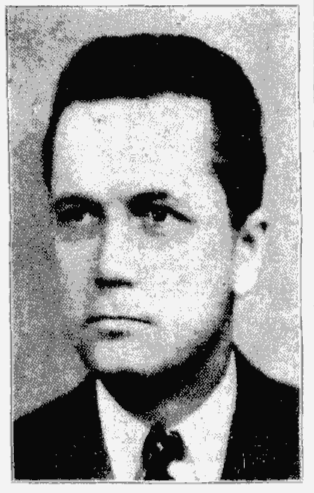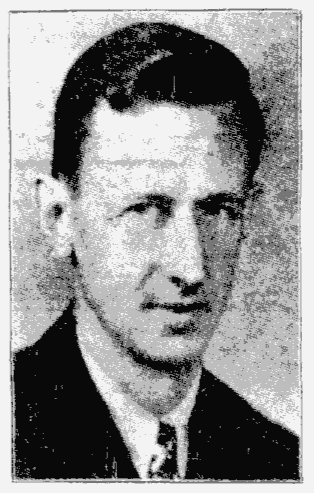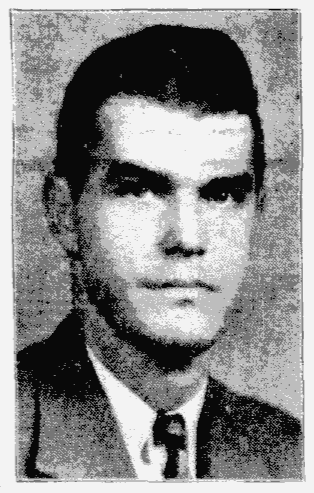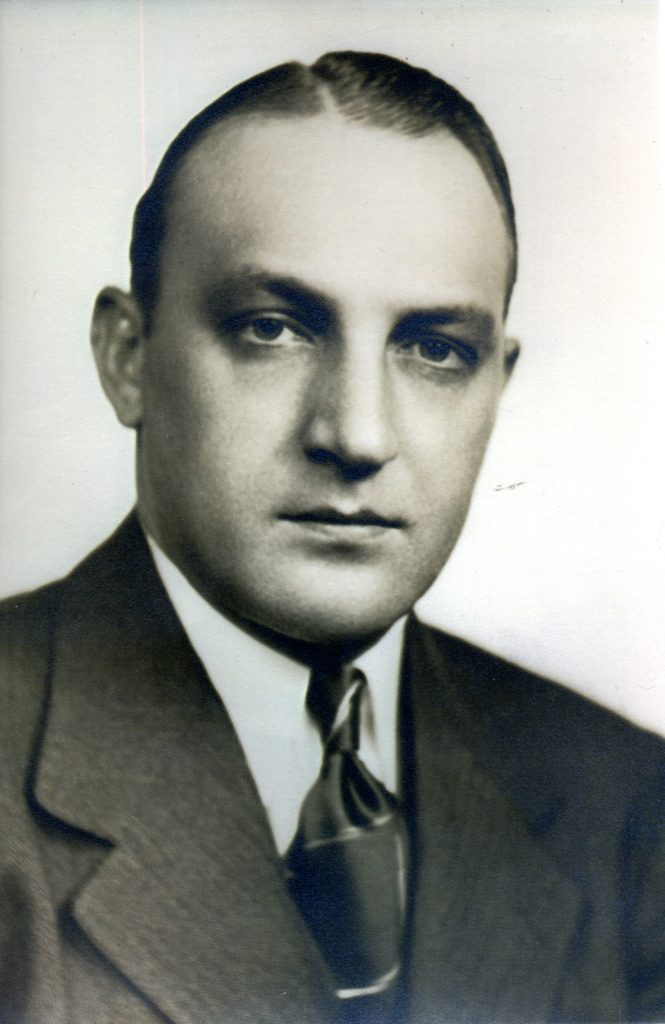Historic Chicago hotel fire killed four Quincy men, including mayor, 75 years ago
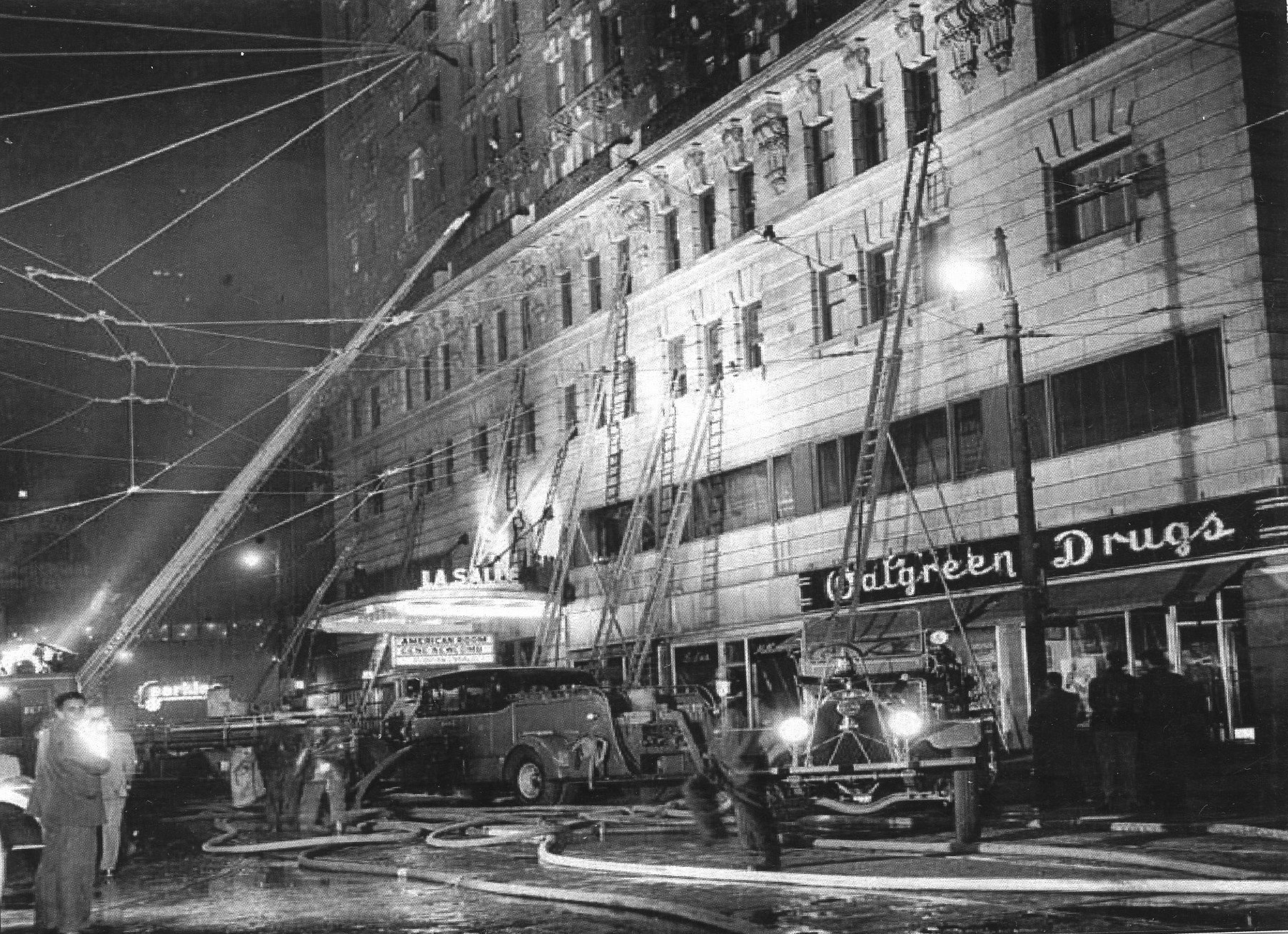
One of the most tragic days in Quincy’s history happened 75 years ago this weekend.
Edward J. Schneidman, 40, the mayor of Quincy, and Martin Heinen, a 6th Ward alderman and a member of the Quincy College (now Quincy University) faculty, died in a disastrous fire that swept Chicago’s LaSalle Hotel during the early hours of Wednesday, June 5, 1946. It continues to be called the worst hotel fire in the city’s history.
Also perishing in the fire were James Potter, a public engineer for the City of Quincy, and Emery Sallstrom, executive director of the Quincy Housing Authority. Sixty-one people died, and many were children.
In Chicago for conference on veterans emergency housing
The four Quincyans had driven to Chicago on June 4 to attend a conference the next morning with regional officials of the Federal Public Housing Authority to discuss veterans emergency housing.
Schneidman and Potter were representing Quincy for the FPHA conference. Heinen was representing Quincy College, which has been allocated emergency veterans housing units for students. Sallstrom represented the Quincy Housing Authority, which was to have charge of the operation of the city’s emergency housing units.
The four men had made reservations at the Bismarck Hotel through Rudolf Frank, manager of the Lincoln-Douglas Hotel in Quincy. Frank learned that when the four arrived at the Bismarck Tuesday evening, they were informed their reserved rooms would not be ready for three hours. Anxious to freshen up after the automobile trip from Quincy, the men asked the Bismarck manager if accommodations could be secured for them at the LaSalle.
A letter confirming reservations for the party at the Bismarck Hotel was found in the clothing of one of the guests killed at the LaSalle.
The fire began just after midnight in the hotel’s Silver Grill Cocktail Lounge on the lower floor. The Chicago Fire Department did not receive its first notification of the fire until 12:35 a.m. The fire quickly spread through the highly-varnished wood paneling in the lounge and the mezzanine balcony overlooking the lobby.
A significant number of people died from flames, but a greater number of deaths were caused by suffocation from the thick, black smoke. Around 900 guests left the building, but about 150 were rescued by the fire services and by heroic members of the public.
Identifying the bodies
Schneidman and Heinen were identified first on the morning of June 5. Schneidman died of suffocation. Henry W. Pollock, a Quincy attorney, also was in Chicago for the housing meeting but was staying at the Edgewater Beach Hotel. He identified Schneidman’s body in the Cook County morgue. Heinen’s body was identified by the Rev. Edgar Eberle of the faculty at St. Joseph’s Seminary at Hinsdale.
Potter’s body was identified on the evening of June 5 by Mrs. Ralph O’Farrell, Harold O’Farrell and Claire Newby, all former Quincyans living in Chicago. Sallstrom’s body was identified at noon on June 6 by Delbert Loos, assistant state’s attorney of Adams County and Sallstrom’s brother-in-law.
Patrolman John Fichter of the Quincy Police Department said the scene at the morgue in Chicago was “near chaos” as efforts were made to identify about 30 victims. Fichter said he reviewed the remaining unidentified bodies in a futile effort to identify Potter or Sallstrom. He said few of the bodies were burned badly, but many of them simply died from asphyxiation.
He described the scene at the morgue as “horrible.”
Remembering the fallen
Services for the four men were held on either June 8 or 9.
City and state police handled a big overflow crowd for Schneidman’s funeral on June 9 at the B’Nai Sholom temple. Only a portion of the crowd went inside, but a loudspeaker carried the music and funeral address by Rabbi Louis Kuppin to the hundreds gathered in the streets and on adjacent lawns and porches.
The county board marched in double ranks to the temple, as did the city alderman, paired by their respective wards. The city officials did the same for the services for the other three men. A platoon of firemen and police formed an escort at both the temple and the Valley of Peace Cemetery. Truckloads of flowers filled the temple to overflowing and were banked for 100 feet around the grave. Three planes from the municipal airport flew in echelon.
Potter was born in Loraine and became the city engineer during Schneidman’s first term in office. William H. Klingner quickly was selected as Potter’s replacement as the public engineer for the city and as the engineer for the Quincy Park District. However, Klingner resigned a year later because of the demands of his own private engineering company, and he was replaced by Charles Bunting.
Sallstrom, a native of Galesburg, taught math at Quincy High School and was the dean of boys for several years. He took over as the executive director of the Quincy Housing Authority on Nov. 24, 1944, and had been in charge of the Indian Hills homes and the Frederick Ball apartments. Bert Weaver, an assistant to Sallstrom, was named executive director on June 21, 1944.
Heinen is remembered for his athletic accomplishments as a player, coach and athletic director at Quincy College. In 1947, a group of men organized the Quarterback Club to support Quincy College sports, especially football. When the college discontinued football after the 1953 season, the group renamed itself the Mart Heinen Club and continues to support sports today.
Heinen was the counselor of the Illinois Division of Vocational Rehabilitation for 27 months before returning to the college. He was an alderman in the 6th Ward and replaced by Art Stowell, who edged Harold Maas in the April 1947 city election.
Special election needed for new mayor
Schneidman began his business career at an early age, working with his father in the family produce business while still in his teens. He was elected as an alderman from the 2nd Ward in 1932. He later served as an office deputy for Sheriff Ray Robertson. He managed his mother’s business, the Schneidman Distributing Company, before his election as a Republican mayor in April 1941 at age 35.
Schneidman, known around Quincy as “Eddie,” established a reputation as an aggressive and constructive mayor during his brief tenure. He is credited with giving the city a position of leadership among Illinois municipalities. Schneidman organized a local defense council that won praise from state and federal officials, and he took the initiative in securing Quincy’s only war plant.
He drummed up support for a joint city and county building, and removed the toll from the Mississippi River Bridge to encourage regional shopping. Schneidman led in the campaign that saw Quincyans vote a $200,000 bond issue for a new municipal airport, then known as Baldwin Field.
The Schneidman Industrial Park on North 24th Street, established in the late 1970’s and managed by the Great River Economic Development Foundation, is named in his honor.
The City Council selected Alderman William Sass of the 4th Ward as acting mayor after Schneidman died. A special election was set for Oct. 15 to replace Schneidman. His brother, Sam Schneidman, ran as a Republican. Former sheriff George Meyer ran on the Democratic ticket.
Sam Schneidman pledged that, if elected, he would “continue the progressive administration of the last five years.” Meyer touted his promise of sweeping changes in all city departments, which he believed to have failed to function effectively.
Meyer won the election by a vote of 8,515 to 6,569 and completed the rest of Edward Schneidman’s term through May 1, 1949, giving him two years and four months in office.
Miss Clipping Out Stories to Save for Later?
Click the Purchase Story button below to order a print of this story. We will print it for you on matte photo paper to keep forever.

